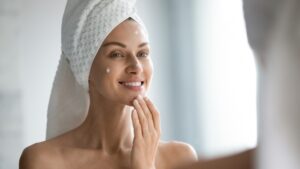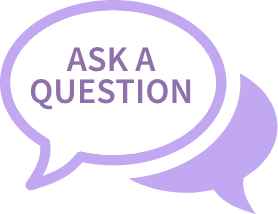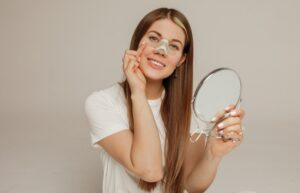How to Reduce Bruising After Rhinoplasty or Septoplasty
Written By Joe Gryskiewicz, MD, FACS
Rhinoplasty and septoplasty are popular surgical procedures that aim to improve the appearance or functionality of the nose. Although these surgeries can yield impressive results, they may also cause bruising and swelling, which are common post-operative symptoms. The recovery process after rhinoplasty or septoplasty plays a crucial role in achieving the desired outcomes and ensuring patient comfort. In this blog, we will share some top tips on how to minimize bruising after rhinoplasty or septoplasty, ensuring a smoother and more comfortable recovery process.
Dr. Joe Gryskiewicz is a highly respected and experienced board-certified plastic surgeon based in Minnesota, with decades of experience in the field of cosmetic and reconstructive surgery, including rhinoplasty and septoplasty.
Rhinoplasty and Septoplasty
Rhinoplasty and septoplasty are two closely related surgical procedures that focus on improving the appearance or functionality of the nose. Rhinoplasty, commonly known as a “nose job,” is a cosmetic surgery that reshapes the nose’s structure to achieve a more aesthetically pleasing appearance or to correct deformities resulting from injury or genetics. On the other hand, septoplasty is a functional surgery aimed at correcting a deviated septum, which can cause breathing difficulties, snoring, or sleep apnea. Although both procedures involve manipulation of the nasal structures, they have distinct goals and are often performed independently or combined, depending on the patient’s needs and desired outcomes.
Stages of Healing after Nose Surgery
The stages of healing after rhinoplasty or septoplasty can be broadly divided into the following phases:
Immediate post-operative phase (first few days):
- Pain, swelling, and bruising are most pronounced during this period;
- Nasal packing or splints may be in place to support the new nasal structure;
- Patients are advised to keep their head elevated, use cold compresses, and avoid strenuous activities.
Early recovery phase (first 1-2 weeks):
- Pain and discomfort start to subside, and your surgeon may remove nasal packing, splints, or stitches;
- Swelling and bruising begin to decrease, and patients can start noticing improvements in their nasal appearance or breathing;
- Patients are advised to continue avoiding strenuous activities, maintain a healthy diet, and follow the surgeon’s post-operative care instructions.
Intermediate recovery phase (2-6 weeks):
- Much of the initial swelling and bruising should have resolved by this stage;
- The nose continues to heal, and patients can gradually return to their normal activities, as advised by the surgeon;
- It’s essential to protect the nose from potential injuries and avoid heavy lifting or contact sports during this period.
Late recovery phase (6-12 months):
- The nose continues to settle into its final shape, and subtle changes may still occur;
- The cartilage and soft tissues fully heal, and the nasal structure stabilizes;
- Patients can fully appreciate the results of the surgery, though minor fluctuations in appearance may still be possible.
Differences between the Procedures in Terms of Recovery
In terms of recovery time, there can be differences between rhinoplasty and septoplasty:
- Rhinoplasty recovery: Rhinoplasty generally involves a more extensive manipulation of the nasal structure, including the bone, cartilage, and soft tissues. This can result in a longer recovery period. Patients can expect initial swelling and bruising to subside within two to three weeks, with the majority of the healing occurring within six weeks. However, it can take up to a year for the nose to fully settle into its final shape.
- Septoplasty recovery: Septoplasty is a less invasive procedure, as it primarily focuses on the correction of the nasal septum. Consequently, the recovery time is often shorter compared to rhinoplasty. Most patients experience relief from their symptoms within a week or two, and the majority of the healing occurs within four to six weeks. Although swelling and bruising may be present, they are generally less pronounced than in rhinoplasty.
Tips to Reduce Bruising After Rhinoplasty or Septoplasty

-
Keep your head elevated
Keeping your head elevated during the initial stages of recovery from rhinoplasty or septoplasty is an essential tip for minimizing swelling, reducing discomfort, and promoting a smooth healing process.
Why head elevation is important
- Reduces swelling: Elevating your head helps to minimize blood flow and fluid accumulation around the surgical area, which in turn reduces swelling and inflammation. Swelling is a natural response to surgery, but minimizing it can improve overall comfort and promote quicker healing.
- Decreases pain and discomfort: When you keep your head elevated, it can alleviate pressure on the nasal tissues, which helps to reduce pain and discomfort during the early stages of recovery.
- Prevents complications: Proper head elevation can also reduce the risk of complications such as hematoma or excessive bleeding, which can occur if blood pools around the surgical site.
How to keep your head elevated
- Sleeping position: Arrange your pillows to create a wedge or use a specially designed wedge pillow to support your head and upper back while you sleep. This will help maintain an elevated position throughout the night, preventing fluid accumulation and pressure on the surgical site.
- Sitting position: When resting during the day, use a recliner or prop yourself up with pillows to ensure your head remains higher than your heart. Avoid lying completely flat or bending forward, as this can increase pressure on the surgical site and potentially exacerbate swelling.
- Posture: Maintain good posture throughout the day, standing and sitting upright with your shoulders back and head held high. Slouching or bending forward can increase pressure on the nasal tissues and delay the healing process.
- Duration: Aim to keep your head elevated for the first week after surgery or as recommended by your surgeon. It’s especially important during the initial days, when swelling and discomfort are most pronounced.
-
Apply Cold Compresses
Applying cold compresses after rhinoplasty or septoplasty is a simple yet effective way to manage swelling and minimize discomfort. Here are some tips on how to properly use cold compresses during your recovery:
Why a cold compress is beneficial
- Reduces swelling: Cold compresses help constrict blood vessels and minimize fluid accumulation around the surgical site, which in turn reduces swelling and inflammation.
- Alleviates pain and discomfort: The cooling effect of cold compresses provides a numbing sensation, which can help relieve pain and discomfort during the early stages of recovery.
- Prevents bruising: By reducing blood flow to the area, cold compresses can minimize the risk of bruising, which is a common side effect of nasal surgery.
How to apply cold compresses
- Choose the right compress: Use a gel pack, ice pack, or a bag of frozen peas wrapped in a clean cloth or towel. Avoid applying ice directly to the skin, as this can cause frostbite or damage the delicate tissues.
- Placement: Apply the cold compress gently to the cheeks and around the eyes, but not directly on the nose. Applying pressure to the surgical site can cause complications and interfere with the healing process.
- Timing: Use the 20-minutes-on, 20-minutes-off rule. Apply the cold compress for 20 minutes, then remove it for 20 minutes
-
Limit Sun Exposure
Limiting sun exposure is an important tip for a smooth recovery after any type of injury or surgery. Here are some reasons why:
- It can increase inflammation: Exposure to the sun’s UV rays can cause skin inflammation, which can slow down the healing process. This is especially true if you have any open wounds or incisions.
- Excessive sun exposure can cause hyperpigmentation or darkening of the skin, which can lead to scarring. This is particularly problematic if you are recovering from surgery or an injury that has left scars.
- Also, can make you more susceptible to infection: Sunburns can make you more susceptible to infection. If you are recovering from surgery or an injury, the last thing you want is to develop an infection that could set back your recovery time.
To limit sun exposure during recovery, consider the following tips:
- Wear protective clothing: Covering up with long-sleeved shirts, pants, and hats can help shield your skin from the sun’s harmful rays.
- Stay in the shade: When outdoors, try to stay in shaded areas, such as under trees or umbrellas. This can help reduce your exposure to the sun.
- Apply sunscreen: If you must be in the sun, apply sunscreen with an SPF of at least 30. Be sure to reapply every 2-3 hours or after swimming or sweating.
- Avoid peak sun hours: The sun is strongest between 10 am and 4 pm, so try to limit your outdoor activities during these times.
-
Avoid Smoking and Nicotine Products
Here’s why and how you should avoid smoking and nicotine products during the recovery process:
- Impaired blood flow: Nicotine constricts blood vessels, which can reduce blood flow to the surgical site. This limited blood supply can impede healing, increase the risk of complications, and prolong the recovery process.
- Delayed wound healing: Smoking and nicotine products can slow down the body’s natural healing process, leading to a longer recovery period and a higher risk of infection, scarring, or other complications.
- Increased risk of complications: Smokers have a higher risk of post-operative complications, such as infections.
-
Stay Hydrated
 Adequate hydration offers numerous benefits for patients recovering from nasal surgery.
Adequate hydration offers numerous benefits for patients recovering from nasal surgery.Why staying hydrated is important
- Supports healing: Proper hydration helps to deliver essential nutrients and oxygen to the surgical site, promoting faster healing and tissue regeneration.
- Reduces swelling: Adequate water intake can help flush out excess fluids and toxins, which may contribute to a reduction in swelling and inflammation around the surgical area.
- Prevents dehydration-related complications: Dehydration can lead to complications such as dizziness, constipation, and urinary tract infections, which can further strain the body during the recovery process.
- Boosts energy levels: Staying hydrated can help maintain energy levels and prevent fatigue, making it easier to cope with the physical demands of the healing process.
How to stay hydrated during recovery
- Drink water regularly: Aim to drink at least 8-10 glasses of water daily, or as recommended by your healthcare provider. Keep a water bottle nearby and sip water throughout the day to ensure consistent intake.
- Choose hydrating foods: Incorporate water-rich fruits and vegetables in your diet.
FAQs about Recovery after Rhinoplasty or Septoplasty
How long does bruising last after rhinoplasty or septoplasty?
Bruising varies from patient to patient, but generally, it starts to fade within 7-10 days after surgery. Most bruising should resolve within 2-3 weeks, although residual discoloration may persist a little longer in some cases.
When can I apply makeup to cover up bruising after rhinoplasty or septoplasty?
You should wait for your surgeon’s approval before applying makeup to the affected area. Usually, makeup can be applied around 7-10 days after surgery, once the external sutures or splints have been removed and the incisions have started to heal.
Are there any treatments or procedures to speed up the resolution of bruising after nasal surgery?
 There are several treatments and procedures that may help speed up the resolution of bruising after nasal surgery. However, it’s important to consult with your surgeon before trying any additional treatments, as they can provide personalized recommendations based on your specific needs and recovery progress. Some options include:
There are several treatments and procedures that may help speed up the resolution of bruising after nasal surgery. However, it’s important to consult with your surgeon before trying any additional treatments, as they can provide personalized recommendations based on your specific needs and recovery progress. Some options include:
- Arnica: A natural supplement derived from the arnica montana plant, which is believed to have anti-inflammatory properties and can help reduce bruising and swelling when used topically or taken orally. Your surgeon may recommend arnica in the form of creams, gels, or oral supplements.
- Bromelain: An enzyme found in pineapple, bromelain is thought to have anti-inflammatory and pain-relieving properties. Some surgeons recommend taking bromelain supplements to help reduce bruising and swelling after surgery.
- Vitamin C: Ensuring adequate vitamin C intake can support collagen production and tissue repair, which may help speed up the healing process. Vitamin C can be obtained through dietary sources, such as citrus fruits, or through supplements.
- Lymphatic drainage massage: A gentle massage technique designed to stimulate the lymphatic system and promote the removal of excess fluids and waste products. This can help reduce bruising and swelling, but it’s essential to consult with your surgeon before trying this technique to ensure it’s safe and appropriate for your recovery.
Why physical activity affects bruising and swelling after rhinoplasty or septoplasty?
Engaging in physical activity increases your heart rate, which in turn increases blood flow throughout the body, including the face. This can affect swelling after surgery. Increased blood flow to the surgical area can exacerbate bruising and swelling and prolong the healing process. Strenuous activities can cause a temporary spike in blood pressure. Higher blood pressure may put additional stress on the blood vessels around the surgical site, potentially leading to increased bruising and swelling.
What part of the nose takes longest to heal after rhinoplasty?
After rhinoplasty, the part of the nose that often takes the longest to heal is the tip. This area tends to be more prone to prolonged swelling and subtle changes compared to other parts of the nose, mainly because of its complex structure, which consists of cartilage, soft tissue, and skin. Additionally, the tip has a limited blood supply, which can slow down the healing process. Although the initial swelling and bruising subside within a few weeks, the tip of the nose can take up to a year or even longer to fully heal and settle into its final shape.
Further Reading about Nose Job with Dr. Joe
- Read Dr Joe’s Rhinoplasty Surgery page
- Read Dr. Joe’s Blog about What Is a Cartilage Grafting Nose Job?
- Read Dr. Joe’s Blog about Best Rhinoplasty for a Bulbous Nose
- Visit our Rhinoplasty Gallery
Medical Reference on Nose Job
- Medical Article on Ethnic Rhino – Hopkins Medicine
- WebMD Rhinoplasty Surgery – WebMD
- Rhinoplasty (Nose Job): Surgery, Recovery, Before & After – Cleveland Clinic



